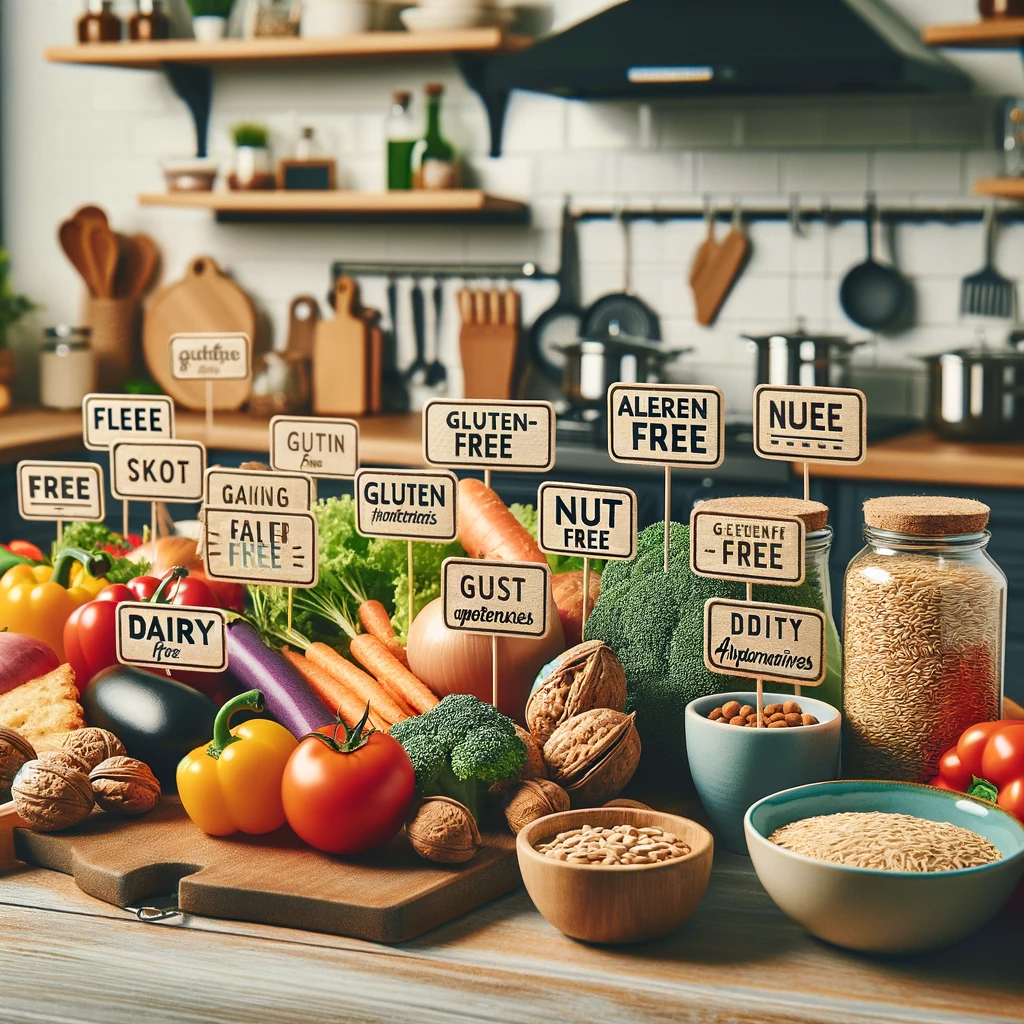In today’s health-conscious world, dietary restrictions and allergies are becoming increasingly common. As a result, the demand for allergen-free ingredients is on the rise. Whether you have food allergies yourself or are cooking for someone who does, knowing how to use allergen-free ingredients is essential for creating safe and delicious meals. In this article, we’ll explore the importance of allergen-free ingredients and provide you with valuable tips on incorporating them into your culinary repertoire.
1. Understanding Food Allergies
Before we dive into allergen-free ingredients, it’s crucial to understand what food allergies are. Food allergies occur when the immune system reacts adversely to certain proteins found in specific foods. Common allergens include nuts, dairy, soy, eggs, and gluten. Allergic reactions can range from mild discomfort to life-threatening situations, making it imperative to identify and avoid allergens.
2. The Significance of Allergen-Free Ingredients
Using allergen-free ingredients is not just a matter of preference; it’s a matter of safety. Cross-contamination and the accidental inclusion of allergens can have severe consequences for those with food allergies. By incorporating allergen-free ingredients into your meals, you create a safe environment for everyone at the table.
3. Identifying Allergen-Free Ingredients
The first step in creating allergen-free meals is to identify suitable ingredients. Look for products that are explicitly labeled as “allergen-free” or “free from [specific allergen].” These labels indicate that the product has been carefully processed to eliminate the allergen and reduce the risk of cross-contamination.
4. Substituting Allergenic Ingredients
One of the most important skills in allergen-free cooking is learning to substitute allergenic ingredients with safe alternatives. Here are some common substitutions:
- Milk: Use almond milk, coconut milk, or soy milk as dairy substitutes.
- Eggs: Try flaxseed or chia seed gel, applesauce, or commercial egg replacers.
- Nuts: Substitute seeds like sunflower seeds or pumpkin seeds in recipes that call for nuts.
- Gluten: Opt for gluten-free flours like rice flour, almond flour, or gluten-free oats.
5. Cooking with Confidence
Once you’ve identified allergen-free ingredients and mastered substitutions, you can cook with confidence. Experiment with allergen-free recipes and adapt your favorite dishes to meet your dietary needs. You’ll be amazed at the delicious meals you can create while staying safe and healthy.
6. Reading Labels Carefully
When shopping for allergen-free ingredients, always read labels attentively. Manufacturers sometimes change ingredients or processing methods, so it’s essential to stay informed and up-to-date. Look for allergen statements and any potential cross-contamination risks.
7. Embracing Whole Foods
A great way to ensure your meals are allergen-free is to focus on whole, unprocessed foods. Fresh fruits, vegetables, lean proteins, and grains like quinoa and rice are naturally allergen-free and can form the basis of many nutritious dishes.
8. Seeking Inspiration
Explore allergen-free recipes online, join supportive food allergy communities, and seek inspiration from allergen-free cookbooks. There are numerous resources available to help you discover new and exciting dishes that cater to your dietary needs.
Conclusion
Incorporating allergen-free ingredients into your cooking not only promotes safety but also opens up a world of culinary possibilities. With a bit of knowledge and creativity, you can enjoy delicious meals without compromising on taste or health. So, embrace allergen-free ingredients, experiment in the kitchen, and savor the satisfaction of creating safe and delectable dishes for yourself and your loved ones. Happy cooking!
